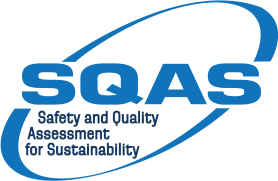Some personal memories about the history of SQAS
by Evert de Jong
In the course of 1992, the De Rijke Group was requested by Gijs Schoonewelle of Dow and Jan Snel of Exxon to join in the project to create a single assessment system for transport companies working for the chemical industry. At the time, being the HSSEQ manager, I was the logical choice to participate in the pilot project on behalf of De Rijke. The used document consisted of approximately 1200 questions and was basically a combination of all questions from Dow audit reports and all questions from Exxon audit reports. After the pilot exercise I was asked to join the Working Group
Early 1993 a final draft document was created by the SQRS Working Group (the predecessor of the current SQAS T&A Committee). For this questionnaire the choice was made to use the short version of 400-plus questions. The working group was by then expanded to a wider representation of Cefic members and included 6 participants from transport companies.
revision cycle
Over the past 30 years SQAS has worked with a revision cycle of approximately 3 years. Most of the revisions were not very noticeable but some specific moments in time have been translated into the SQAS program more than others. Listing them makes the input of all volunteering members of the T&A Committee over the years to some extent even more respectable.
looking back on the revisions
- The early methodology to enter scores for Quality, Safety and Environmental aspects at the single question level (if applicable) in 3 different columns of scoring boxes was discontinued after a few years. I also distinctly remember how the then chairman of the SQAS Working Group at the start of one of the revision meetings single-handedly decided that the chapter 3 at the time (dealing with question on ‘Quality’ matters only), must be completely taken out of the questionnaire. His decision was followed up.
- After various meetings of the SQAS Working Group, it was decided that an accreditation scheme must be developed and implemented for the SQAS Assessors. At that time the name of the SQAS Working Group was changed to SQAS Technical & Accreditation Committee.
- In 2001 another revision process was started by the T&A Committee. The final draft was finished by summer and a last meeting was scheduled for October 2001. At that final meeting we had to discuss how the committee should handle the consequences of the terrorist attacks in New York and Washington on 9-11. Most of the committee members decided to continue with the final draft as planned. Not surprisingly, during the next revision quite a few additional questions on security aspects found their way in the new questionnaire.
- With ever expanding ‘competition’ of other audit schemes, SQAS revisions over the years have seen several efforts to include additional ‘specialistic’ aspects in the questionnaire. Most visible examples can be found under the banners of “Corporate Social Responsibility” and “Operation Clean Sweep”. Objective has always been to make the SQAS questionnaire more complete and to avoid double auditing for Logistic Service Providers. It is strange to realize that some of the initiators of the ‘competing’ audit schemes are indeed the same chemical companies that are members/supporters of the SQAS program.
- In SQAS over the years we have seen more and more questions being included linked to digitalization. The current questionnaire still has quite a limited number of questions on this subject, future revisions are expected to see a rise in the attention of digital matters.
- As with other areas of chemical logistics management, Cefic and ECTA have tried to be proactive and include questions with Health, Safety and Environmental backgrounds in the questionnaire. Most often these were based on the knowledge and experience of Chemical and Logistic companies, translated into Best Practice Guidelines. A very clear example is Behaviour Based Safety, both for drivers on the road and related to the interfaces between drivers and operators at loading and unloading sites. The fact that the BBS sections in the SQAS questionnaire have shown lower scores throughout the years highlights the continued relevance of the questions.
- Emission Calculations and Emission Management are 2 other areas of logistic focal points that have shown both the proactive nature of SQAS and the ever increasing importance of sustainable logistic solutions. With the inclusion of fuel reduction in the BBS driver training programs and the translation of further questions in SQAS from the 2011 Cefic/ECTA Logistic Emission Calculations Guideline we have seen more examples of the SQAS system taking the lead in sustainable matters rather than following up on the requirements of introduced new legislation. The same can be said for the latest SQAS 2022 revisions which include most if not all requirements of standards and legislation to be introduced this year.
Recognition to the people behind sqas
To be sure many more background details, facts & figures, anecdotes could have been included in this article. One thing that is definitely missing is a long, long list of the names of all the representatives of companies and associations that have contributed to SQAS during the past 30 years. Their willingness to share their knowledge and spend their time is sometimes not visible enough.
Evert de Jong 27 March 2023
n.b. In the article I use the word ‘questionnaire’ rather than using the correct description of individual questionnaires and modules. It started as one questionnaire 30 years ago and I have kept writing as if it continued to be one questionnaire.


